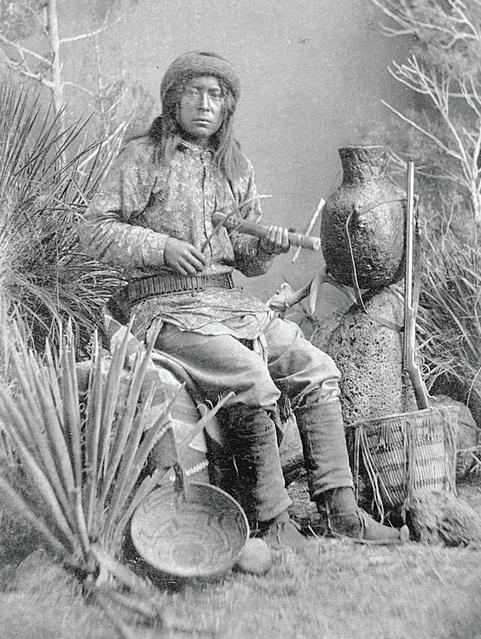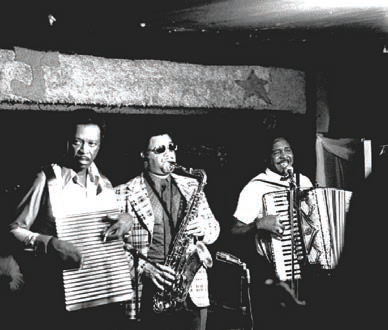1.3: North America
- Page ID
- 238536
Native American Music
Throughout history, certain cultures have had more opportunity to develop music than others. Often, the effort required to hunt, gather, or raise food has been all encompassing and has left little time for leisure or artistic pursuits. Therefore, music was only performed when the people thought it was necessary or important. Like many other cultures, traditional Native American music was normally performed as a part of important rituals meant to ask specific deities for various benefits, such as increased health, successful hunting, success in war, or rain; or to contact the spirit world for other reasons.
Most traditional Native American music was vocal music. It was used to tell a story, express a wish, or to describe an emotional state, and it was almost always accompanied with percussion. The percussion instruments used were normally drums made of stretched animal skins, rattles, and, later, metallic bells. Vertical flutes and panpipes were sometimes used to accompany love songs. These songs had a small range with a few different pitches and were quite often based on the pentatonic scale, a fivenote scale used in many different cultures. Most Native American music was not harmonized and did not have any form of harmonic accompaniment.

Figure \(\PageIndex{1}\): Chasi, Bonito’s Son, an Apache musician playing the “Apache fiddle”. (CC0; A. Frank Randall via Wikimedia Commons)
Tejano (TexMex)
Tejano or TexMex music is a blend of Central American and European influences. TexMex specifically refers to the music that grew out of both Mexico and
Texas. It is dance oriented and uses European scales and chords. Instruments often include upright bass, drums, guitar, accordion, and solo vocal.
TexMex Music – Ay te Dejo en San Antonio – (Flaco Jimenez)
The following example is based on the Western European dance called the waltz. It is in three-quarter time, with the emphasis on beat one. Listen for the
ukulele, trumpet, drums, guitar, vocal harmony, and the trombone.
TexMex Music – Arboles de la Barranca – (El Coyote)
Southwest Louisiana
Cajun Zydeco is another form of American folk music that grew from European roots. This style was developed by Cajuns, the descendants of Acadian immigrants (French speakers from Acadia), who settled in the swamps of Southwest Louisiana, later to be called Acadiana. Almost all Zydeco music is vocal and is almost always designed for dancing. Instruments were traditionally acoustic since electricity is not easy to come by in Acadiana! Instruments include upright bass (later the electric bass), drums, accordion, fiddle, guitar, and solo vocal. The words are almost always in French, the language of the Cajun settlers.

Figure \(\PageIndex{1}\): Clifton Chenier on accordion, brother Cleveland on washboard and John Hart on tenor saxophone (CC BY 3.0; User “Bozotexino” via Wikimedia Commons)
Zydeco Music - Tu le Ton Son Ton - Clifton Chenier

